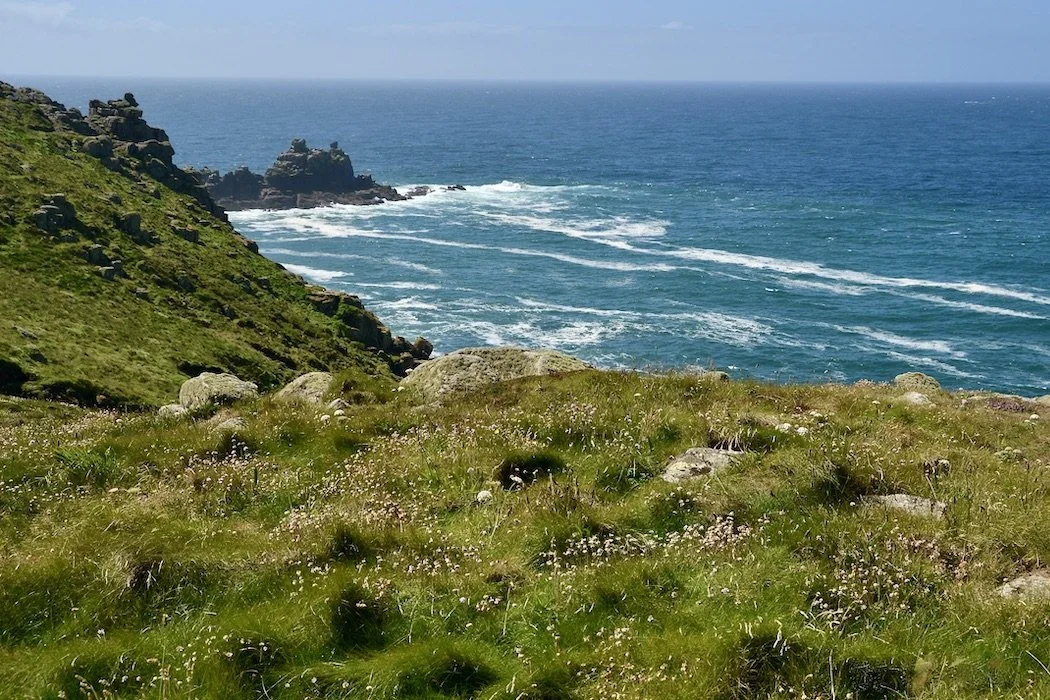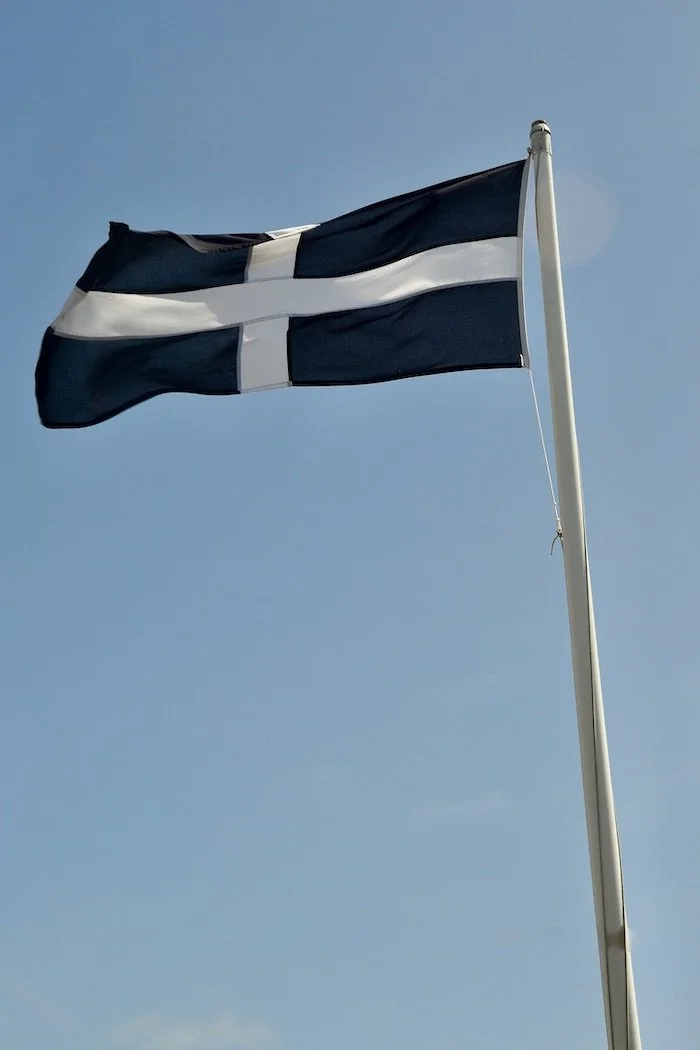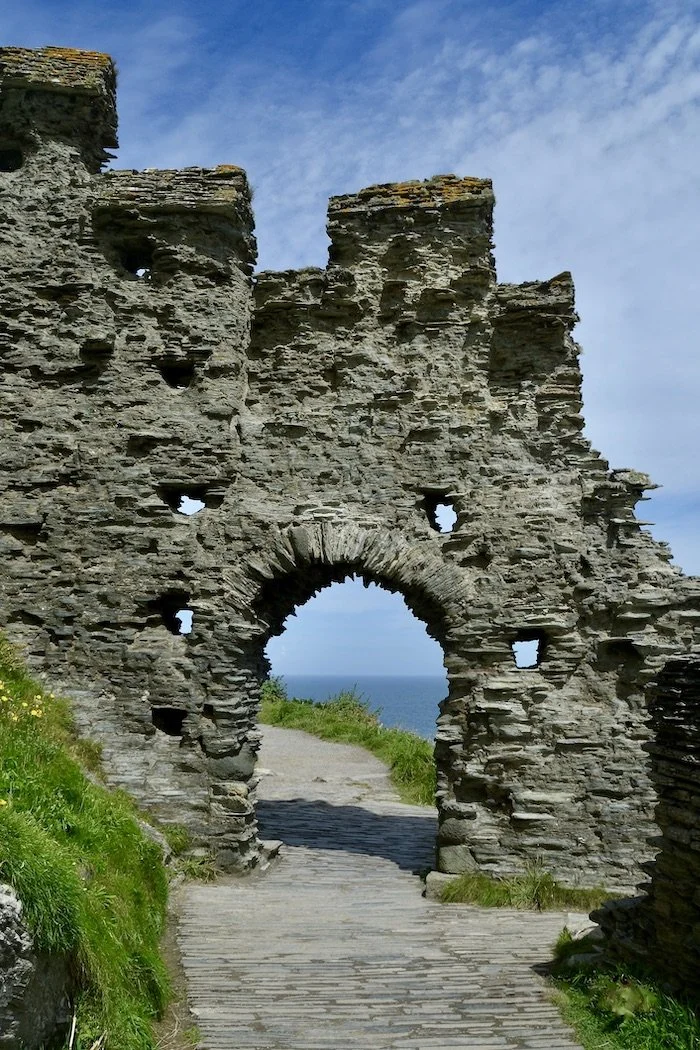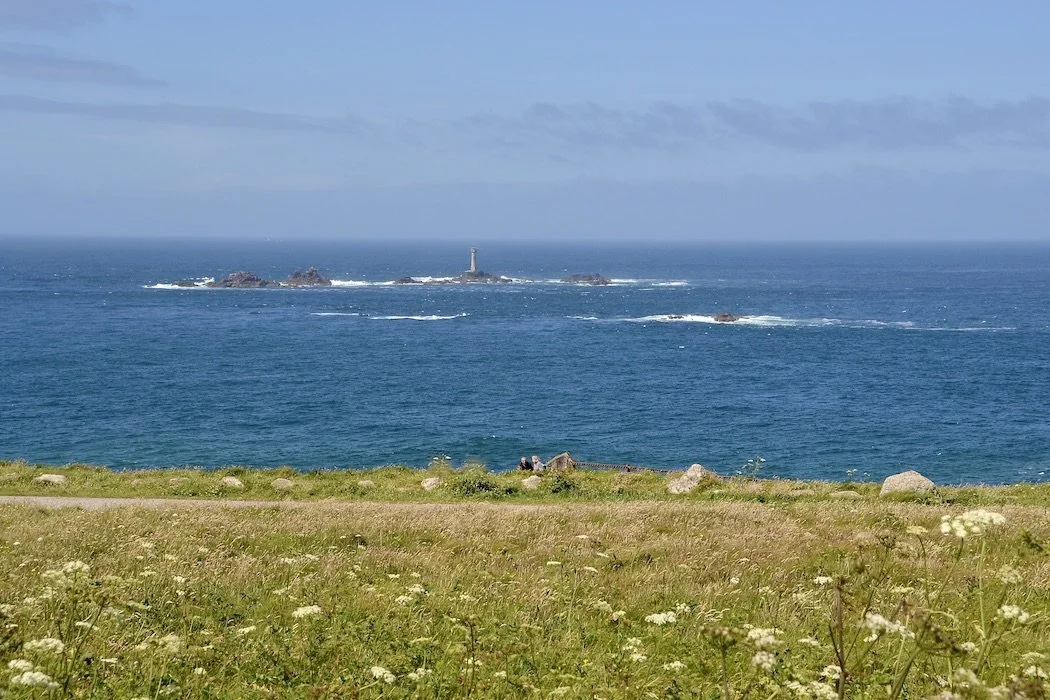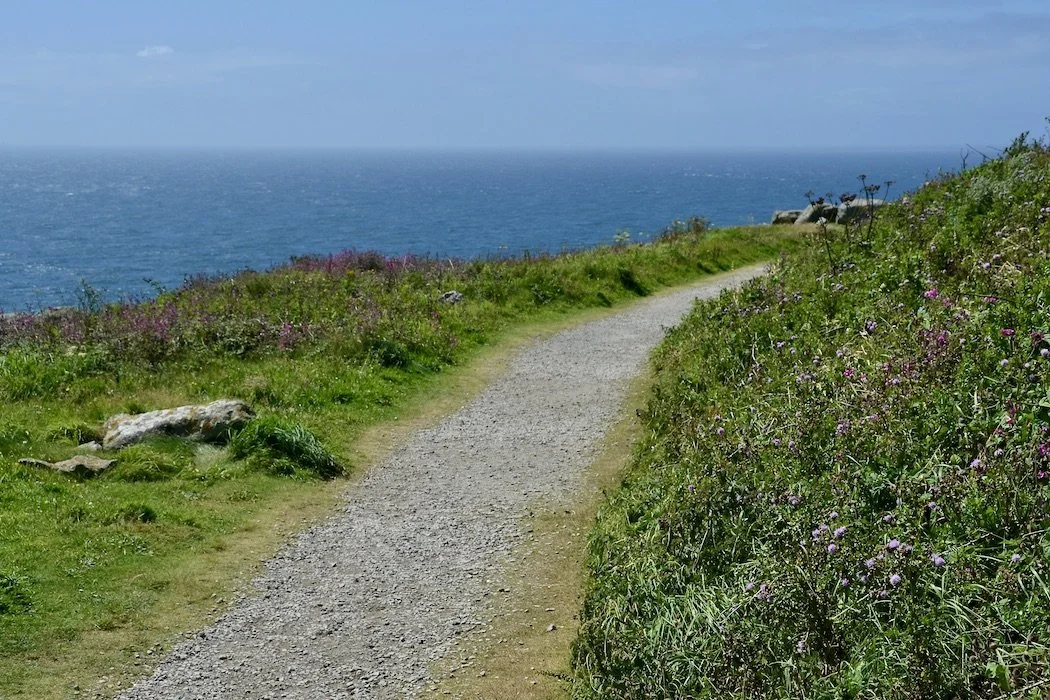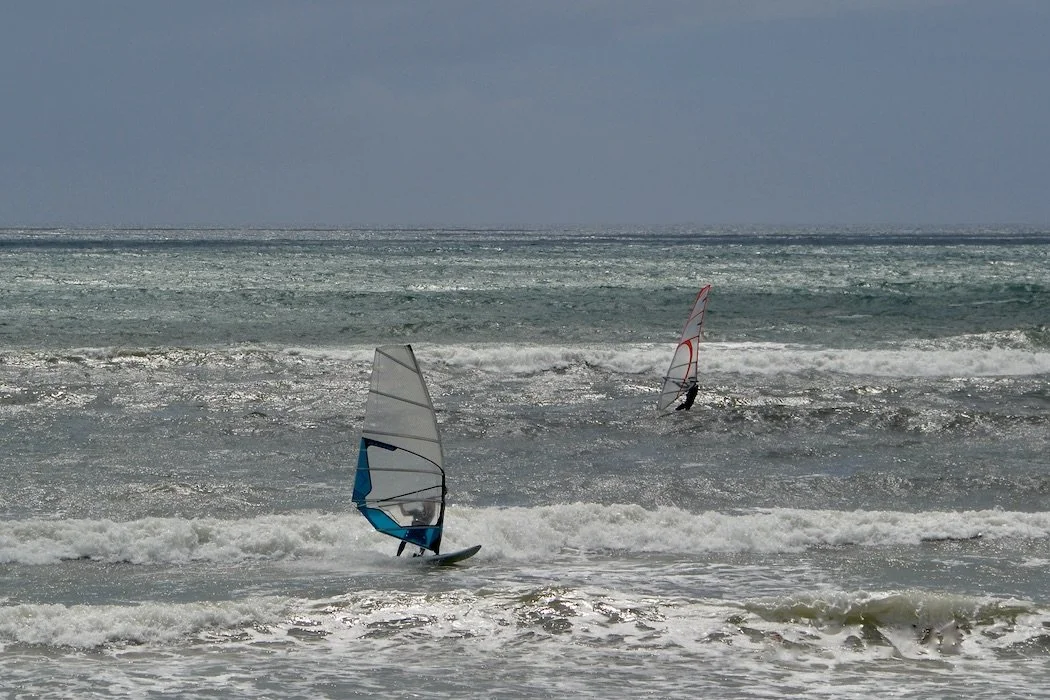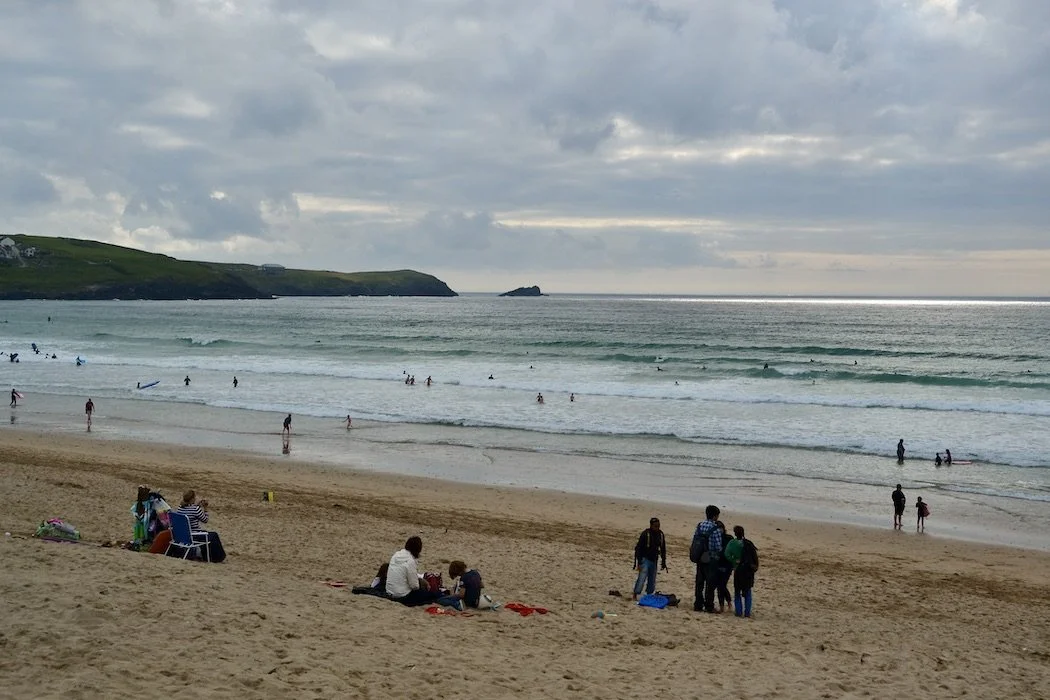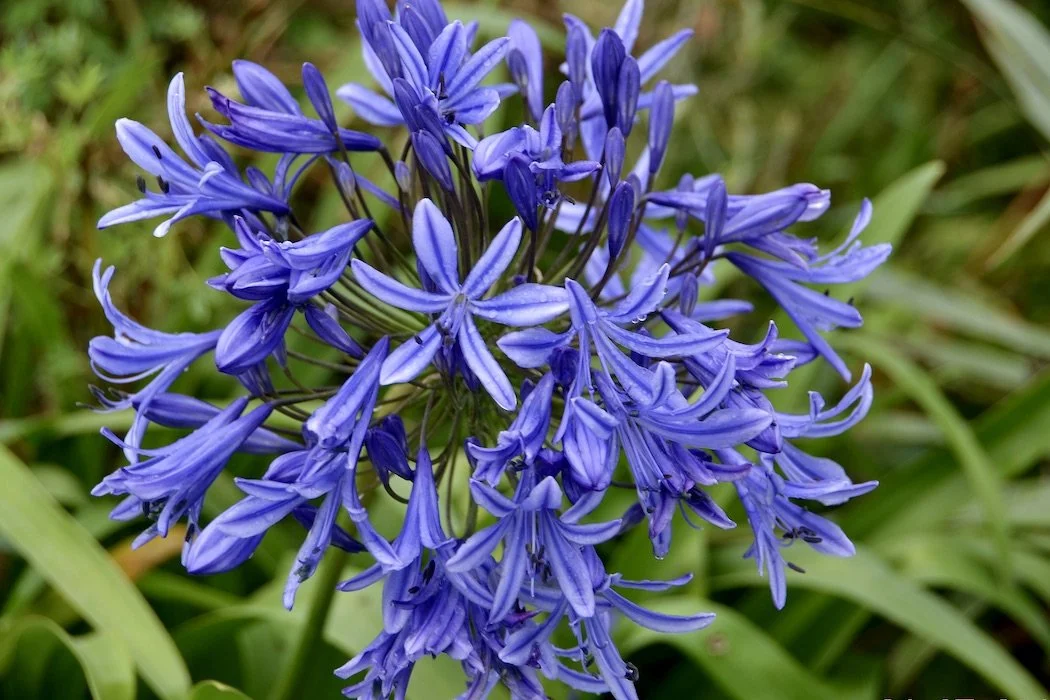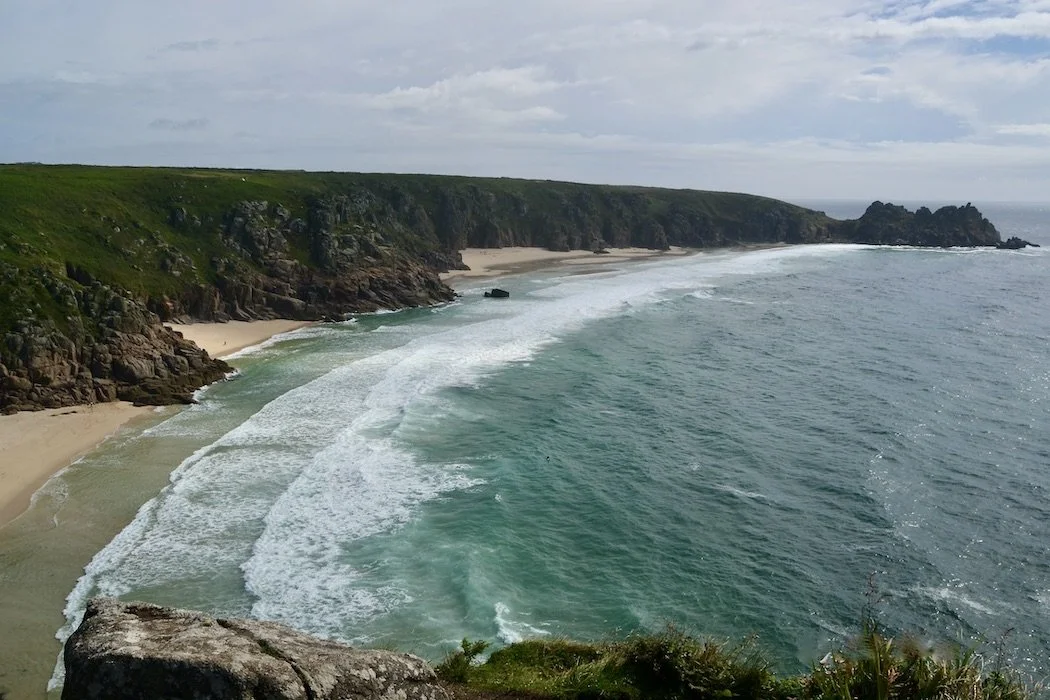At the end of England at Land's End
Gazing out to sea from Land’s End
“The gladdest moment in human life is a departure into unknown lands” ― Richard Burton
The far southwest corner of England, long isolated and even resistant to modernization, and therefore more mysterious and unknown than the rest of the land, is still a wild and dramatic place. Miles of beaches and rugged coastline culminate at the tip of the Cornish peninsula at Land’s End, 263 miles from London. Traveling there on winding roads through heath, moorland, and lush rural landscape is truly getting away.
Land’s End easily fulfills anyone’s expectations of an ocean that extends far beyond where the eye can see. The English Channel ends here, where the Celtic Sea begins. Waves crash on headland cliffs, and the only sight, Longships Lighthouse, sits protectively on Carn Bras, a rocky outcropping just offshore. The flag of Cornwall, Saint Piran’s Flag, flies at the spot that over 1000 years ago was named Penwith Steort, meaning “extreme end of the tail” in a mix of Cornish and Old English. Legend also lives on here, as it is said that the mythical land of Lyonesse of King Arthur’s realm lies under the sea between the Penwith promontory and the Isles of Scilly that lie twenty-four nautical miles to the southwest.
In ancient times, the Dumnonii people occupied the entire peninsula that encompasses modern-day Cornwall and Devon. Numerous monuments from those eras remain dotted across the isolated inland countryside along extensive and beautiful hiking trails. These include Chun Castle, an Iron Age ring fort; Mên-an Tol, a Bronze Age standing stone with a hole in the middle, believed to have healing power; and many stone circles, among them the nineteen Merry Maidens of Boleigh.
The north coast of the Cornish peninsula on the Celtic Sea is known for surfing, even though England isn’t especially famous worldwide for this popular water sport. At the town of Newquay, the wide sandy Fistral Beach is a veritable surfer’s paradise year-round because the waves are consistent, and the Gulf Stream prevents the water from becoming icy. Newquay Golf Club, with 18 challenging links-style holes, stunning views, and stiff breezes, is situated just above the beach, and the nearby Victorian Headland Hotel also overlooks the ocean from Towan Headland. Further north on the wild Cornish coast, the breathtaking Tintagel Castle was built half on the mainland and half on an inhospitable rocky island bluff by Richard the 1st Earl of Cornwall in the 1230s. Because the site had already been a stronghold high above the sea for centuries, it became associated with the mythology of King Arthur through the writings of Geoffrey of Monmouth. Nowadays, the remaining castle ruins seem to tumble down the sheer drop into the ocean.
The southern coast is home to the ancient market town and westernmost port along the English Channel, Penzance, which was sacked many times by foreign fleets but was never home to pirates. Nearby, the Minack Theater’s spectacular open-air amphitheater is cut precariously into oceanside cliffs and surrounded by a lush subtropical garden. The Minack Gardens, overlook the long sandy Porthcurno Beach, where turquoise waters are protected by granite cliff coves. The theater stages world-class theatrical and musical performances for viewers who bring picnics and warming blankets.
Don’t Miss:
A walk along seaside paths in the heath at Land’s End.
Serendipity:
Needed rest stop- The grand Headland Hotel’s southwest terrace is an ideal spot for tea or a cocktail, accompanied by an ocean view.
Lunch Tip:
The Terrace in Penzance for a good view and a great sandwich.
Bedtime:
Breakers Guest House, a down-to-earth, family-owned hotel in a centrally located Newquay townhouse for spectacular views over the golf course and beach.
Subscribe for inspiration to have my posts drop directly into your inbox. *If you enjoyed what you read, please share this post with like-minded travelers.*
*All photographs are mine, taken with my Nikon D3100 or iPhone 12 Pro.*

